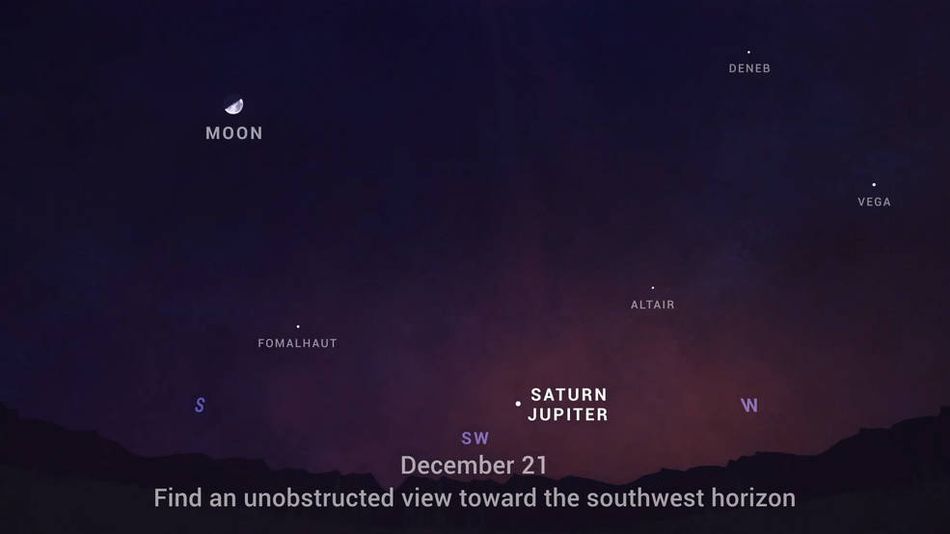The gas giants Saturn and Jupiter are drawing ever closer together.
Well, from our Earthling perspective anyhow.
The “great conjunction” of these planets in the night sky is imminent. They will be closest on Dec. 21, appearing as a “double planet.” The celestial event, also known as the “Christmas Star,” hasn’t occurred at night for almost 800 years.
“You can imagine the solar system to be a racetrack, with each of the planets as a runner in their own lane and the Earth toward the center of the stadium,” Henry Throop, an astronomer in NASA’s Planetary Science Division, said in a statement. “From our vantage point, we’ll be able to…see Jupiter on the inside lane, approaching Saturn all month and finally overtaking it on December 21.”
In reality, however, the planets will still be hundreds of millions of miles apart. It will be cool. Here’s what to know:

The night sky on Dec. 21, 2020.
Image: nasa
-
How close will the planets appear? “The closest alignment will appear just a tenth of a degree apart and last for a few days,” wrote NASA. “On the 21st, they will appear so close that a pinkie finger at arm’s length will easily cover both planets in the sky. The planets will be easy to see with the unaided eye by looking toward the southwest just after sunset.”
-
Look to the Southwest an hour after sunset in a place (like a field) where buildings or hills aren’t obstructing your view. Avoid bright streetlights. Jupiter, which overall is the third brightest nighttime object in our sky (after the moon and Venus), will be its radiant self and easily visible — unless it’s cloudy! Saturn will be fainter. Until Dec. 21, Saturn will appear to the upper left of Jupiter, but on Dec. 21 Jupiter will pass Saturn, reversing their positions.
-
Use binoculars! Or a telescope. “The planets can be seen with the unaided eye,” wrote NASA, “but if you have binoculars or a small telescope, you may be able to see Jupiter’s four large moons orbiting the giant planet.”
Something to ponder as you stare up at the conjunction: One of those little dots around Jupiter, if you can see them, is the moon Europa. It’s an ice-covered moon believed to hold an ocean of water or slushy ice. “Europa’s vast and unfathomably deep ocean is widely considered the most promising place to look for life beyond Earth,” writes NASA.
Happy sky viewing, and pondering…
